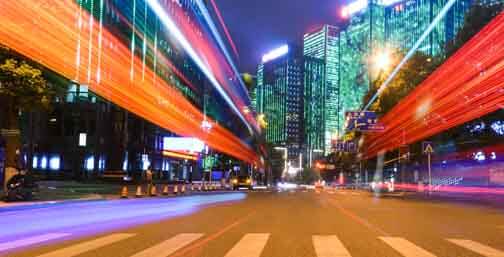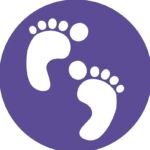Blog
Top 15 Largest Cities in Brazil
- Thursday December 9th, 2021
- Posted by: Amanda Ennes
- Category: Brazil

Brazil has a population of over 214 million people spread through 5,570 cities. Let’s check the top 15 largest cities in Brazil.
Table of Contents
TogglePopulation of Brazil
According to the 2010 census, Brazil had a total population of 190,755,799 people spread in an area of 8.5 million square kilometers. The Brazilian Institute of Geography and Statistics estimates the population has grown to almost 214 million people in 2021. A new census scheduled for 2022 will confirm these statistics.
Also according to the IBGE data, men are 48,2% of the population, while women make up 51,8%. 85% of the population in Brazil live in an urban region and 15% of residents occupy rural areas of the country. Brazil has 5,570 cities and most of them have from 10,000 to 20,000 inhabitants. Nevertheless, less than 1% of these cities have a population of 500.000+ people.
Read more: Top 10 Hottest Cities in Brazil
Largest Cities in Brazil by Population
1) São Paulo – 12,396,372 people
São Paulo is a global city with impressive statistics. It is not only the most populous city in Brazil, but also the largest city in the Americas, the Western Hemisphere, and the Southern Hemisphere, as well as the 5th largest city in the world. São Paulo is also among the top 10 largest metropolitan regions in the world.
The city is known for its economic power, holding 10.7% of all Brazilian GDP. Furthermore, it also holds great cultural influence in the country, being home to important museums and art and sports events.
Its most famous tourist attractions are the São Paulo Museum of Art, the Museum of the Portuguese Language, and the Ibirapuera Park. Paulista Avenue is also a hot spot in the city, especially during the weekends.
2) Rio de Janeiro – 6,775,561 people
Rio is not only the most famous town in Brazil, but it is also among the largest cities in Brazil. With over 6 million inhabitants, the Rio de Janeiro Metropolitan Region consists of 22 municipalities and over 13 million people.
Founded in 1565 the city of Rio de Janeiro served as the capital of Brazil from 1763 to 1960, before it was transferred to Brasília.
It is one of the most visited cities in South America, known for its natural beauty, Carnival, music, and famous landmarks. Speaking about this, famous attractions in Rio include Copacabana Beach, Christ the Redeemer Statue, Sugarloaf Mountain, and Maracanã Stadium.
Rio de Janeiro is also home to Caminhos Language Centre, the largest and most exciting Portuguese school for foreigners in Brazil.
Read more: Smaller Cities to Visit Near Rio de Janeiro
3) Brasília – 3,094,325 people
Located in the Brazilian highlands, Brasília is the federal capital of Brazil, with one of the highest GDP per capita in Latin America.
Brasília is a planned city, part of a project to move the capital to a more central location. It was designed by architects Lúcio Costa and Oscar Niemeyer, engineer Joaquim Cardozo, and landscape designer Roberto Burle Marx. Besides, UNESCO named Brasília the “City of Design” in 2017.
Lake Paranoá, the Cathedral of Brasilia, and the National Congress are among the most famous destinations for tourism in Brasília.
4) Salvador – 2,900,319 people
Salvador is one of the oldest colonial cities in the Americas and the first capital of Brazil. It is known for its cuisine, dance, music, and colonial architecture, mainly the Pelourinho historical neighborhood.
The city is also home to important religious events, such as the Feast of Bomfim and Feast of Yemanjá, celebrated especially in Afro-Brazilian religions.
Furthermore, the coastline of Salvador is one of the longest in Brazil, with a total extension of 80 km.
Its most famous tourist attractions are Farol da Barra and Barra Beach, the Lacerda Elevator, Mercado Modelo, and Pelourinho historical neighborhood. Salvador is also famous for its Carnival, with lots of Axé music and its special type of sound trucks.
5) Fortaleza – 2,703,391 people
Fortaleza is among the most visited places in Brazil. The city attracts tourists because of its fishing villages, quiet beaches, coastal lifestyle, and exciting nightlife.
Landmarks in Fortaleza include Iracema Beach, Praia do Futuro, Mercado Central, and the fishing market.
6) Belo Horizonte – 2,530,701 people
Belo Horizonte is the capital of the state of Minas Gerais. It is one of the largest cities in Brazil, with a population of around 2.5 million people. In fact, its metropolitan area is home to over 6 million people. Belo Horizonte, or BH, as people call it, is also the first planned modern city in Brazil.
Because Belo Horizonte is surrounded by mountains, the city is home to countless parks and home to thousands of native birds and mammals.
Belo Horizonte also has great importance in the history of the architecture of Brazil. The Pampulha neighborhood served as a blank canvas for architects and artists such as Oscar Niemeyer, Burle Marx, and Candido Portinari to display their work.
7) Manaus – 2,255,903 people
Manaus lies within the Amazon forest. Yes, a big city with over 2 million inhabitants is located right in the middle of the largest rainforest in the world.
This city is one of the hottest capital cities of Brazil, with average temperatures of 26.7°C, reaching up to 38.3°C during summer. Moreover, it is situated near the confluence of the Negro and Solimões rivers, an astonishing natural phenomenon in the Amazon region.
Manaus is a tourist destination, with many great attractions, such as the Amazon Theatre, Mercado Adolpho Lisboa, the Ponta Negra Cultural, Sport and Leisure Park, and much more.
8) Curitiba – 1,963,726 people
Curitiba is the largest city in Brazil’s South Region. It is one of the few Brazilian cities with a very high Human Development Index and one of the safest cities in Brazil.
The city also has one of the highest rates of green area in Brazil, with 52 square meters of green space per person. Home to over 30 parks and forests, you can visit most tourist attractions of the city by taking a hop-on-hop-off tourist bus service that goes through the most important destinations.
9) Recife – 1,661,017 people
Recife stands out as a major tourist attraction of the Northeast of Brazil, both for its beaches and historical sites. The city is also famous for its Carnival, considered by many the best in Brazil.
The city of Recife is also home to Frevo, a fast-paced Brazilian music and dance. The steps of Frevo have their roots in Capoeira moves and you need to use a small colorful umbrella while dancing.
Watch teacher Deise’s video to learn more about Recife and the state of Pernambuco.
10) Goiânia – 1,555,626 people
Goiânia is home to Seranejo music in Brazil, strongly connected with the countryside lifestyle of the state of Goiás.
Located about 200 kilometers from Brasília, Goiânia is the second-largest city in the Central-West Region of Brazil. Moreover, Goiânia lies within the Cerrado biome, a savanna-like ecosystem located in the highlands of central Brazil.
11) Belém – 1,506,420 people
Belém is the capital of the state of Pará, in the North region of Brazil. It is the 11th most populous city in the country and the first European colony on the Amazon.
Belém has valuable importance for the culture of Brazil. It is home to traditional festivities, including Círio de Nazaré, the largest religious event in the country.
Among the famous tourist attraction in Belém are Ver-o-Peso Market, Estação das Docas, and Theatro da Paz.
12) Porto Alegre – 1,492,530 people
According to the 2010 census, Porto Alegre is one of the most forested cities in Brazil, with around one million trees. Capital of the state of Rio Grande do Sul, Porto Alegre is also the southernmost capital city of Brazil.
Famous attractions in Porto Alegre include the Botanical Garden, Farroupilha Park, and Lake Guaíba.
13) Guarulhos – 1,404,694 people
Guarulhos is the first city on this list that is not a state capital. Located in the state of São Paulo, it is home to the Guarulhos International Airport, one of the most important airports in Brazil.
Guarulhos is famous for its industries and business.
14) Campinas – 1,223,237 people
Campinas concentrates 10% of the industrial production of Brazil. It is the 11th richest city and the third-largest industrial park in the country.
Bosque dos Jequitibás, the Taquaral Park, and the Pedreira do Chapadão Park are among the most famous destinations for tourism in Campinas.
15) São Luís – 1,115,932 people
São Luís is a city full of culture. In fact, the Bumba Meu Boi festival is a huge tradition in the city since the 18th century. It is so important that UNESCO has declared it an Intangible Cultural Heritage of Humanity in 2019. Similarly, UNESCO has also listed São Luís’ historical center as a World Heritage Site because of its more than 3,000 colonial-style buildings.
Watch teacher Josie’s video about Bahia, Paraíba, and Maranhão and learn more about São Luís.
Study Portuguese in Brazil with Caminhos Language Centre. We also offer Student Visa for Brazil and accommodation options in Rio de Janeiro.


 Deutsch
Deutsch Français
Français Português
Português Español
Español



